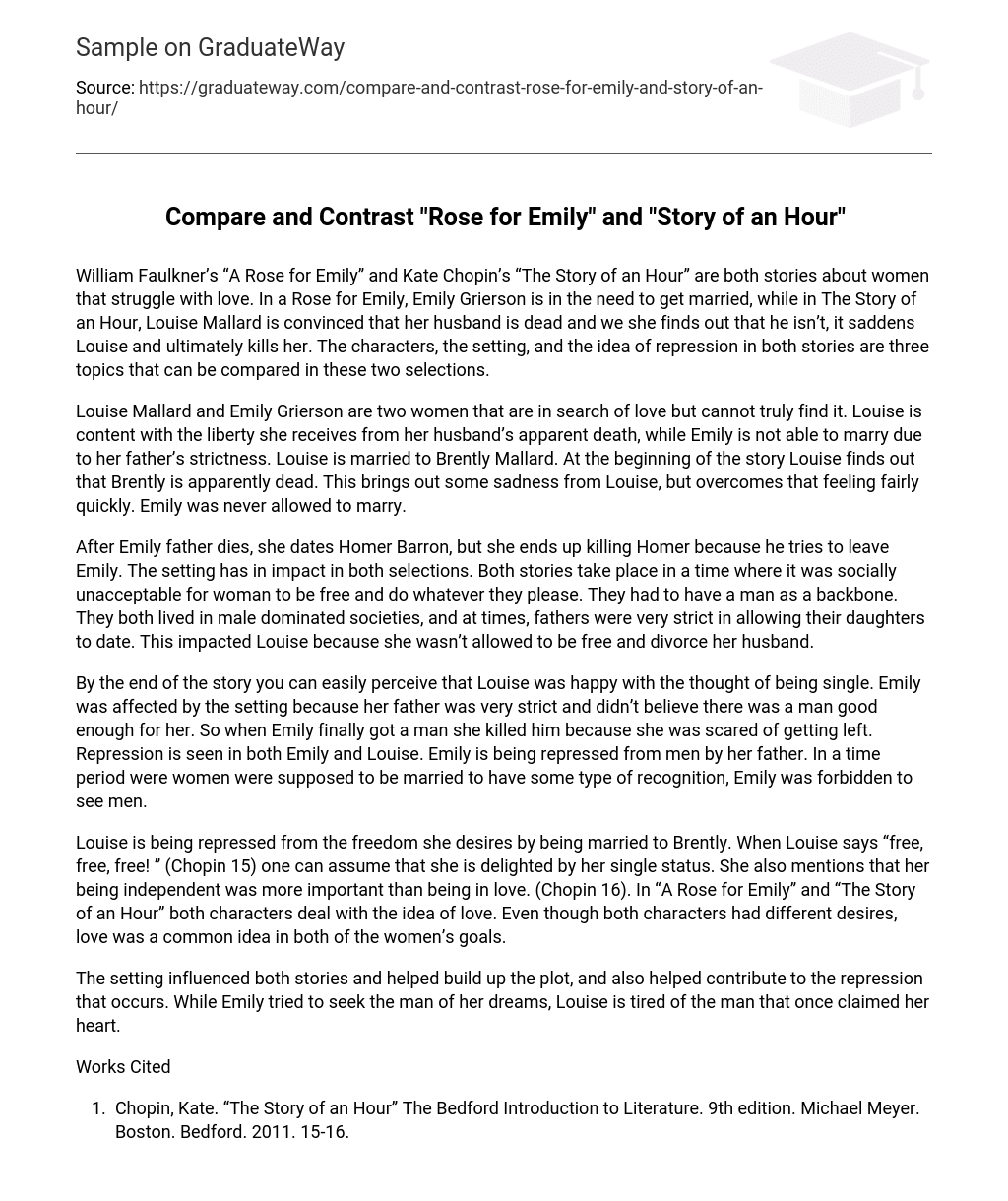William Faulkner’s “A Rose for Emily” and Kate Chopin’s “The Story of an Hour” are both stories about women that struggle with love. In a Rose for Emily, Emily Grierson is in the need to get married, while in The Story of an Hour, Louise Mallard is convinced that her husband is dead and we she finds out that he isn’t, it saddens Louise and ultimately kills her. The characters, the setting, and the idea of repression in both stories are three topics that can be compared in these two selections.
Louise Mallard and Emily Grierson are two women that are in search of love but cannot truly find it. Louise is content with the liberty she receives from her husband’s apparent death, while Emily is not able to marry due to her father’s strictness. Louise is married to Brently Mallard. At the beginning of the story Louise finds out that Brently is apparently dead. This brings out some sadness from Louise, but overcomes that feeling fairly quickly. Emily was never allowed to marry.
After Emily father dies, she dates Homer Barron, but she ends up killing Homer because he tries to leave Emily. The setting has in impact in both selections. Both stories take place in a time where it was socially unacceptable for woman to be free and do whatever they please. They had to have a man as a backbone. They both lived in male dominated societies, and at times, fathers were very strict in allowing their daughters to date. This impacted Louise because she wasn’t allowed to be free and divorce her husband.
By the end of the story you can easily perceive that Louise was happy with the thought of being single. Emily was affected by the setting because her father was very strict and didn’t believe there was a man good enough for her. So when Emily finally got a man she killed him because she was scared of getting left. Repression is seen in both Emily and Louise. Emily is being repressed from men by her father. In a time period were women were supposed to be married to have some type of recognition, Emily was forbidden to see men.
Louise is being repressed from the freedom she desires by being married to Brently. When Louise says “free, free, free! ” (Chopin 15) one can assume that she is delighted by her single status. She also mentions that her being independent was more important than being in love. (Chopin 16). In “A Rose for Emily” and “The Story of an Hour” both characters deal with the idea of love. Even though both characters had different desires, love was a common idea in both of the women’s goals.
The setting influenced both stories and helped build up the plot, and also helped contribute to the repression that occurs. While Emily tried to seek the man of her dreams, Louise is tired of the man that once claimed her heart.
Works Cited
- Chopin, Kate. “The Story of an Hour” The Bedford Introduction to Literature. 9th edition. Michael Meyer. Boston. Bedford. 2011. 15-16. Print.
- Faulkner, William. “A Rose for Emily” The Bedford Introduction to Literature. 9th edition. Michael Meyer. Boston. Bedford. 2011. 91-97. Print.





